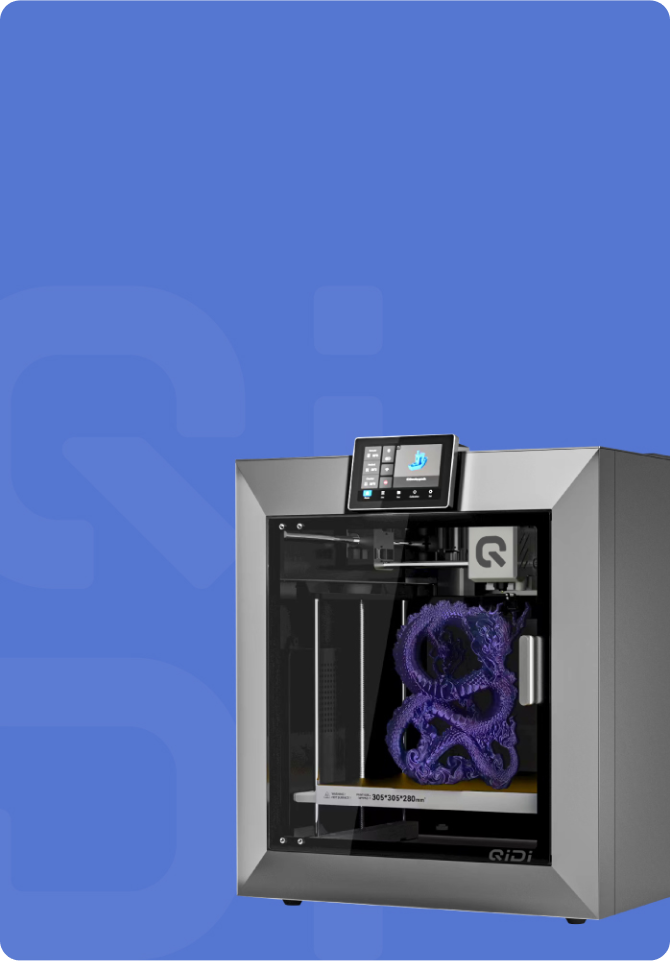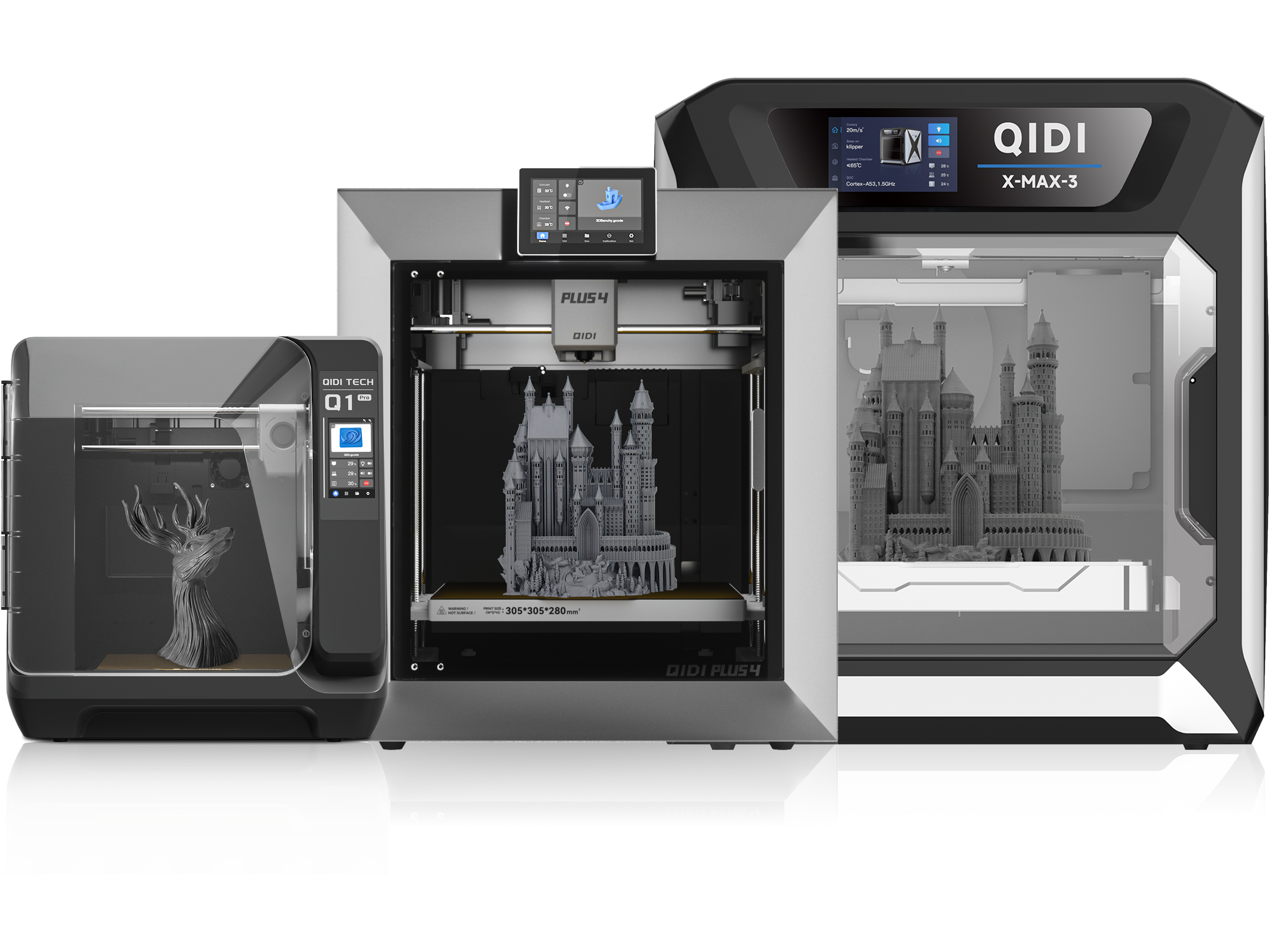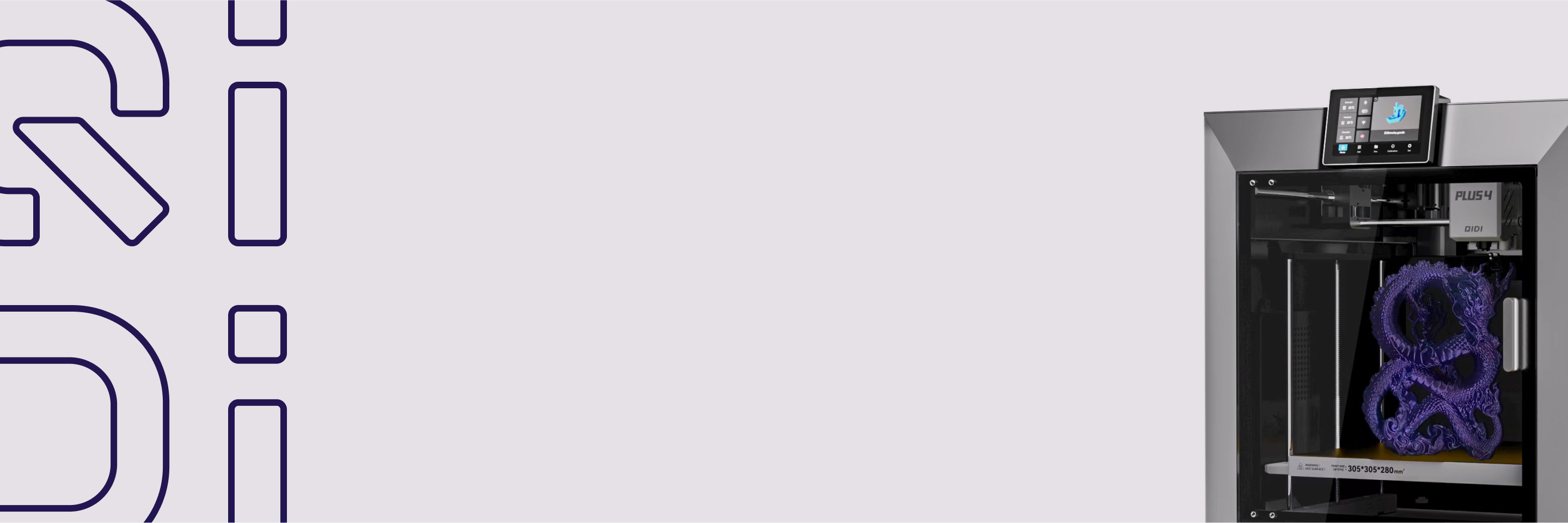3D -printerkøbsvejledning
Find den perfekte 3D
printer til dine projekter.
Start dit kreative eventyr i dag!
Bring dine ideer til live med Qidi FDM 3D -printere
Fused Deposition Modeling (FDM) er en udbredt 3D-printteknologi, der er kernen i QIDIs tilbud.FDM 3D-printerefungerer ved at opvarme termoplastiske filamenter til en halvflydende tilstand og præcist aflejre dem lag for lag på en byggeplatform, styret af en digital 3D-model. Denne additive fremstillingsproces muliggør skabelse af komplekse tredimensionelle objekter med høj præcision og repeterbarhed.
FDM-printere er en af de mest populære typer 3D-printere på markedet i dag. Denne type 3D-printer har god materialekompatibilitet og brugervenlige anvendelser.
Materialets alsidighed: FDM 3D-printere understøtter brugen af en række forskellige termoplastiske materialer, herunder PLA, ABS, PETG, TPU osv. Hvert materiale har unikke egenskaber, såsom styrke, fleksibilitet, varmebestandighed og gennemsigtighed, og du kan vælge det mest passende. 3D-printmateriale i henhold til din specifikke anvendelse.
Omkostningseffektivitet: Sammenlignet med andre 3D-printmetoder er FDM-teknologi generelt mere overkommelig. Prisen på FDM-printere er relativt lav, og prisen på råmaterialer (filamenter) er også rimelig. Dette gør FDM til et levedygtigt valg for hobbyfolk, undervisere og små og mellemstore virksomheder.
Nem at bruge og vedligeholde: Vores FDM-printere er udstyret med et enkelt og tydeligt kontrolpanel, der gør det nemt for begyndere at styre printerens grundlæggende funktioner ved at trykke på knapper eller dreje på drejeknapper. Betjeningsprocessen er intuitiv og let at forstå. Vedligeholdelsen er også enkel og involverer primært regelmæssig rengøring, udskiftning af dyser og lejlighedsvis kalibrering.
FDM 3D-printere bruges i mange områder, herunder:
Daglige fornødenheder: Print husholdningsartikler såsom mobiltelefonholdere, nøgleringe, bordskånere, holdere til krydderikrukker og kontorartikler såsom opbevaringskasser og musemåtter.
Kunstneriske og dekorative stykker: Bruges til at skabe skulpturer, herunder abstrakte skulpturer og skulpturer med specifikke temaer, og til at lave unikke smykker såsom øreringe og halskædevedhæng.
Uddannelsesmodeller: Lav undervisningsmodeller, såsom modeller af menneskelige organer i biologitimer, topografiske modeller i geografitimer og geometriske modeller i matematiktimer.
Industrielle prototyper og specialfremstillede dele: Udskriv produktprototyper til udseende- og funktionstest i de tidlige stadier af produktudviklingen, og udskriv specialfremstillede dele til specielt industrielt udstyr.
Medicinske og sundhedsmæssige applikationer: Lav skræddersyede ortopædiske apparater, såsom svangstøttepuder og kirurgiske guider, der kan hjælpe med oral eller ortopædisk kirurgi.
Hvis du ikke er sikker på, hvilken 3D-printer der passer til dig, kan du først afklare formålet eller målet med udskrivningen:
Trykformål
Forbrugerniveau (personligt/familie): egnet til print af små modeller, kreative designs og normalt med et lavere budget, såsom Qidi Tech Q1 Pro.
Fagligt niveau (uddannelse/laboratorium): skal tage højde for både nøjagtighed og stabilitet, hvilket understøtter højhastighedsudskrivning og automatisk nivellering.
Industri (produktion/fremstilling) printere som de QIDI Plus4 er designet til højintensiv produktion. Den har en stor byggevolumen til håndtering af store projekter. QIDI Plus4 har en opvarmet kammertemperatur på 65 °C og understøtter materialer, der er modstandsdygtige over for høje temperaturer, hvilket bidrager til at opnå udskrifter af høj kvalitet.
Udskrivningsmål
Modelstørrelse: Industriniveau kræver stor byggestørrelse, mens forbrugerniveau primært er 200-300 mm³.
Materialekompatibilitet: Hvis du har brug for at printe tekniske plastmaterialer (ABS, nylon) eller kompositmaterialer (kulfiberforstærket), skal du vælge en model, der understøtter højtemperaturdyser og lukket struktur.
Du kan også se på ydeevneparametre såsom printnøjagtighed. Printnøjagtighed måles ud fra faktorer som laghøjde og dysediameter. Mindre laghøjder og dysediametre producerer generelt print med højere opløsning og finere detaljer. Hvis dit projekt kræver højpræcisionsdele, skal du kigge efter en printer, der kan opnå mindre laghøjder og har mindre dysemuligheder.
FAQS
Find svar på dine mest presserende spørgsmål om vores 3D -udskrivningsmaskiner og -tjenester.
En FDM 3D-printer, også kendt som smeltede deponeringsmodelleringsprintere, er en printer, der skaber objekter gennem lag-for-lag deponering af smeltet plastfilament. Det plastiske filament opvarmes, indtil det bliver smeltet og ekstruderet gennem en dyse for at danne formen af interesse. En af grundene til, at FDM -printere er populære, er, at de er billige og meget lette at bruge, så de er vidt brugt af både begyndere og professionelle brugere.
FDM 3D -printere har flere fordele. Den første er, at de normalt er mere omkostningseffektive end andre typer 3D-udskrivningsteknologier. Denne økonomi gør dem tilgængelige for et bredt marked, såsom hobbyister, undervisere og fagfolk. For det andet er FDM-printere brugervenlige og imødekommer en bred vifte af materialer, fra hårde til termoplast af teknisk kvalitet, såsom ABS og PLA. Disse printere er alsidige, som gør det muligt for en at bruge dem i en lang række applikationer, fra prototype til design af funktionelle dele. De producerede dele er stærke, og de kan modstå mekanisk brug. Kørselsomkostninger er også lave, da det ikke kræver nogen form for farlige kemikalier, hvilket gør det sikkert og let at køre.
FDM 3D -udskrivningsprocessen involverer design af en 3D -model ved hjælp af CAD -software. Når dit design er klar, bruges skiver software til at konvertere modellen til forskellige lag. Printeren opvarmer derefter plastikfilamentet og ekstruderer den gennem en dyse og lægger hvert lag i henhold til den skiver model. Når laget er lagt ned, afkøles og størkner det og opbygger det endelige objekt. Denne lag-for-lag-mekanisme giver kontrol over den endelige objekts form og struktur.
SLA og FDM er to forskellige 3D -udskrivningsteknologier. Den største forskel er materialet og processen. FDM -printere bruger termoplastiske filamenter, som er smeltet og ekstruderet for at lægge lag. SLA -printere bruger flydende harpiks, der hærdes af en laser til at helbrede hvert lag. SLA er normalt i en bedre opløsning, og overfladerne er glattere, så det er meget egnet til designene med meget detaljer og meget indviklede. FDM er mere velegnet til funktionelle prototyper og større dele, fordi det er stærkere og billigere. Generelt er FDM også billigere sammenlignet med SLA -printere og deres materialer.
Printopløsning, laghøjde, ekstruder- og platformstemperatur, udskrivningshastighed, filamentkvalitet, dysestørrelse og ordentlige skiverindstillinger påvirker alle den endelige udskrivningskvalitet. Dobbelt ekstrudering, et lukket bygningskammer og auto-kalibreringsfunktioner hjælper også med at forbedre konsistensen, præcisionen og pålideligheden.


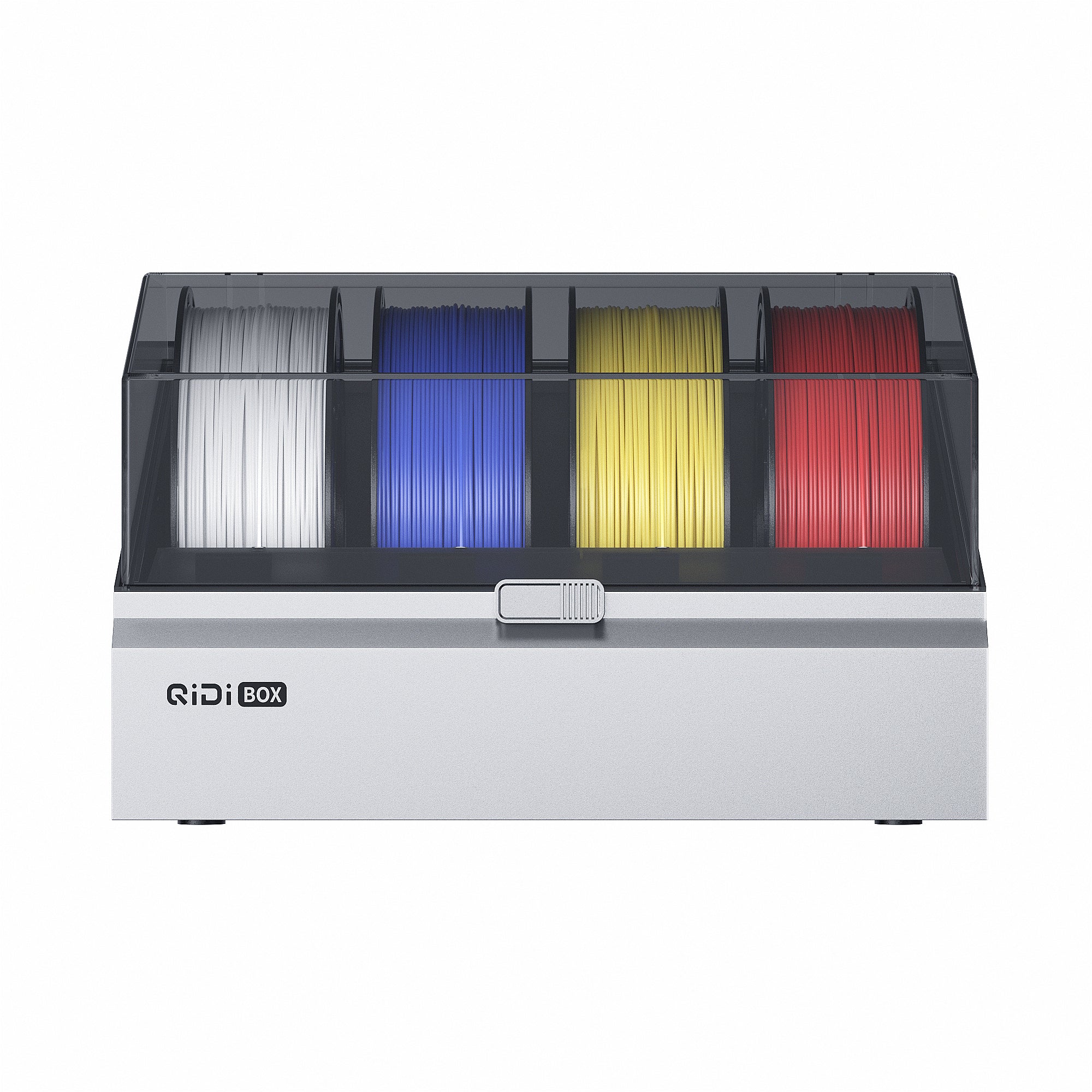 QIDI Box
QIDI Box
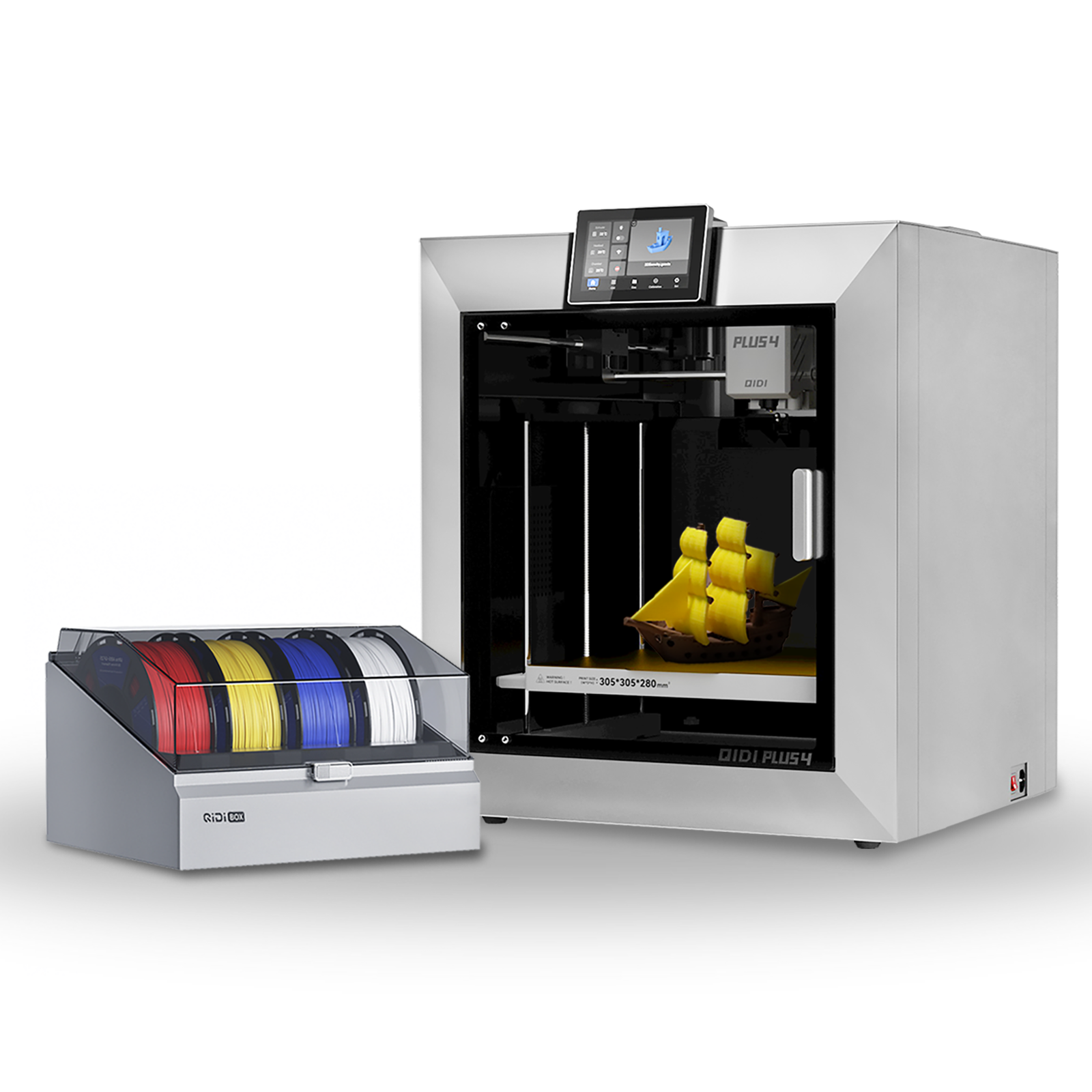 Qidi Plus4 3D -printer
Qidi Plus4 3D -printer
![[Qidi X-CF Pro, speziell für den Druck von Kohlefaser und Nylon entwickelt] - [QIDI Online Shop DE]](http://eu.qidi3d.com/cdn/shop/files/3034a1133efe01daba919094b70c6310.jpg?v=1750300120) Qidi Tech Q1 Pro 3D -printer
Qidi Tech Q1 Pro 3D -printer
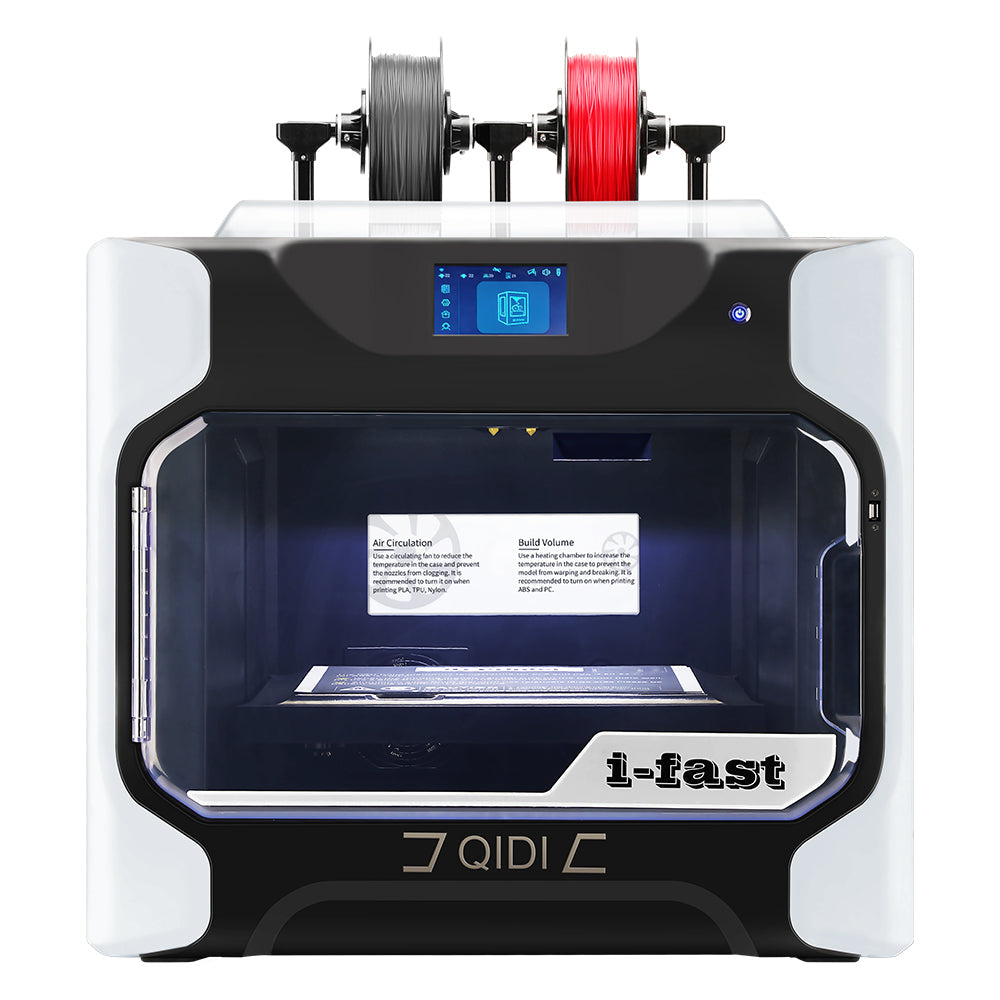 Qidi Tech I-hurtig 3D-printer
Qidi Tech I-hurtig 3D-printer


